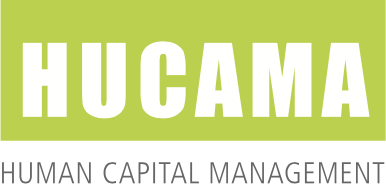As the Human Resources lead for your organization, you’re busy and resource constrained. From hiring the right people, to training and growing your current employees, to building up the robust HR practices that will give your organization a competitive advantage, you have a lot on your plate.
Furthermore, most HR people feel the pressure with budgets being cut; leaving them with a high pressure to demonstrate that HR makes a significant contribution to the organization’s overall goals.
At Hucama we believe that evidence-based personality assessments can help you to:
- Make the best hiring decisions, ensuring candidates will fit and thrive in their new role
- Identify which employees to promote, and who should be in leadership positions
- Foresee how to structure your teams
- Reduce employee turnover and increase satisfaction
The use of evidence-based personality assessments will give you the possibility to effectively predict future consistent performance – the measure of how quickly candidates are able to meet and sustain a required level of performance.
The Big Five
The key to predicting a candidate’s future performance is the Big Five Model. A widely-respected, evidence-based model that uses five core dimensions of a person’s psyche or personality to evaluate how they would fit in a role. The Big Five Model takes into account:
- Neuroticism (or Need for Stability): the tendency to experience emotions like anger, anxiety, or vulnerability and a desire for stability
- Extraversion: the tendency to be energetic, positive, and sociable
- Openness (or Originality): the tendency to appreciate new experiences, be imaginative, and strive for self-actualization
- Agreeableness (or Accommodation): the tendency to be cooperative, compassionate, trusting and well-tempered
- Contentiousness (or Consolidation): the tendency to be organized, dependable and consistent
When a candidate or employee is evaluated for these traits, the Big Five Model provides unbiased insight on their suitability for a position, making it a critical inclusion in any organization’s HR toolbox.
How do personalities line up with required responsibilities?
Personality assessments are just one half of the equation. The other half is identifying the required competencies for success in a role. One way to do this is by using a Competency Framework. You’ll be able to determine success baselines, know how to make your internal competencies align with your organization’s success factors, and identify leadership potential in employees.
When you are recruiting for a position, you know exactly what is required for the candidate to succeed. Once a candidate has been assessed and you have their results, you are able to determine whether their personality aligns with the core competencies of the position. The more closely aligned the position and the candidate, the better the fit.
Making use of personality assessments enables you to take control of performance management, optimize your organizational recruitment process, and implement dynamic systems for performance optimization.
When you combine the Five Factor Model with required competencies for a role, you can determine Future Consistent Performance. Future Consistent Performance measures how quickly a candidate can begin a new role and achieve—then sustain—a predetermined level of performance. The faster a candidate can achieve the goal level, the better.
By assessing personalities and putting competency frameworks in place, you will be able to address the following challenges:
Employee Satisfaction: With employee satisfaction correlated closely with working in positions where competencies align with responsibilities, your team members will be happier, stay with you longer, and will produce higher quality work.
Team Structure: Personality assessments showcase how candidates and current employees can work together in teams, indicating whether restructuring or added new members will be successful.
Reduce Budget: Long hiring cycles, turnover and candidate unsuitably all cost money. With a robust HR framework that includes the Five Factor Model, your organization will get more done with fever resources, and in less time.
Perception of HR’s Contribution: When HR implements framework to pre-screen candidates for suitability, reduce the time requires to hire talented candidates who can pick up the required skills sooner, and reduce turnover, there is no doubt that senior management will take notice.

Our focus is to create the optimal relationship between individual fulfillment of a good and engaged work life and fitting that with the global goal of the organization. We design both the technology and the processes that help organisations to manage competencies.


Trackbacks/Pingbacks